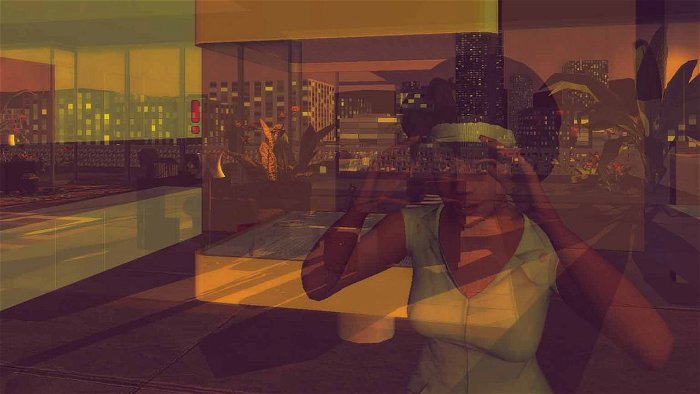Tale of Tales has been developing games since 2003. Auriea Harvey and Michaël Samyn, both artists, lead the Belgium-based studio. Their mission statement indicates that they focus on art as beauty and joy.
“As designers we hope that videogames can be as diverse and meaningful as any other medium. We want to create playful experiences that appeal to both gamers and non-gamers. We try to design expressive interfaces to access engaging poetic narratives through simple controls,” the statement continues.

After reading about, looking at game play as well as screenshots of their newest project, Sunset, set to come out this spring, those poetic narratives Tale of Tales uses engaged me in an unexpected way.
Sunset uses the perspective of Angela Burnes, an immigrant housekeeper who cleans the luxurious bachelor apartment that belongs to Gabriel Ortega. With simple exploration controls, Angela completes assigned tasks in the orange, red light that streams through the heavily windowed apartment, which she cleans once a week at sunset. Angela eventually finds her temptation to go through her employer’s things too powerful and ends up entangled in a plot against the city’s dictator.

The story takes place in the 70s in a fictional South American city, San Bavón in Anchuria. The web site lists a “distinct soundtrack in many styles to evoke the atmosphere of the 70s” and even this is highly noticeable in the game’s trailer: the operatic song that accompanies the gameplay crackles like an old record.
Although never stated that Sunset is paying homage to any other piece of art, I found it interesting that upon looking up “Anchuria,” which sounded so familiar to me, I found that this fictitious country (The Republic if Anchuria) was also used in an O. Henry novel, entitled Cabbages and Kings. That title is a reference to the narrative poem featured in Lewis Carol’s Through the Looking Glass.
In many of the images released so far, in fact most of them, reflections on the windows inside Ortega’s apartment are a prominent visual feature. This is one way the player sees Angela’s face: as a reflection while she looks out over the cityscape. Even without mentioning the similarities between the basic plot of Through the Looking Glass (Alice can see a fantastical world in a looking glass and travels through a mirror in order to enter it) and the sort of double-reference of the fictional setting’s name, the overlapping ideas became apparent to me.

Angela is a bystander in Sunset. She witnesses the world through glass and is someone who becomes involved in conflict indirectly; a less common feature in many video games where the protagonist is usually the hero who directly becomes involved in the conflict in order to save the day. The same way anyone who plays a game, especially a first person perspective game, is looking through to a similar fantastical world and becomes indirectly involved with the story and acts as the main character through button mashing.
Sunset looks amazing as a game in itself. It sounds like a pretty cool story with an interesting main character. But for me (and before it’s even released!) its appeal also lies in the fact that it’s caused me to meander through my own thoughts and awareness as an imaginative onlooker, not only as a player of games, but as a curious lover of literature and poetry and how games and lit (among other things) can reference and accentuate each other effectively as art forms. We’ll see how well this theory holds up once the game comes out!




